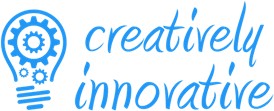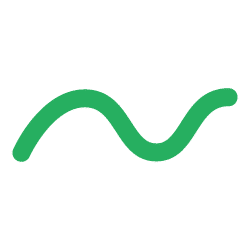Table of Contents
- Understanding PPC Lead Conversion
- Enhancing Lead Quality through Targeted Campaigns
- Effective Landing Pages for Dental Practices
- Conversion Rate Optimization (CRO) Techniques
- Tracking and Analyzing PPC Campaigns
- Integrating PPC Leads into Practice Management
- Leveraging Remarketing to Increase Conversions
- Collaborating with a Dental PPC Agency
- Conclusion
Welcome to PPC advertising, where effectively managing your online ads can significantly transform the patient intake of your dental practice. At Creatively Innovative, we are a dental PPC agency that specializes in crafting and managing campaigns that not only attract clicks but convert these clicks into loyal patients. This guide delves into advanced strategies for converting PPC leads effectively, ensuring that every click has the potential to enhance your practice’s growth and visibility.
Understanding PPC Lead Conversion
Understanding lead conversion in the context of PPC is crucial for any dental practice aiming to optimize its digital marketing efforts. A lead in the PPC realm is any potential patient who expresses interest through actions defined by your campaign goals, such as filling out a contact form or calling your practice. Converting these leads involves a mix of art and science—using the right message at the right time to encourage a booking. The quality of leads can significantly affect conversion rates; therefore, focusing on attracting high-intent users is essential.
Enhancing Lead Quality through Targeted Campaigns

Sophistic targeting is key to improving lead quality. This means not just targeting by keywords but diving deeper into audience demographics, behaviors, and even times of day. For example, targeting parents early in the morning or late in the evening can be effective for pediatric dental services.
You can learn more about how a professional dental PPC agency would target your prospects in this blog: How To Target The Right Audience With Google Ads For Dentists
Effective Landing Pages for Dental Practices
A well-crafted landing page acts as the cornerstone of successful conversions. It should clearly state what makes your practice unique and why a potential patient should choose you over competitors. Elements like testimonials, clear and professional images of your practice, and trust badges (like accreditations or Better Business Bureau ratings) can greatly increase trust and conversion rates. A/B testing different elements on the page, from headline offers to the color of the call-to-action button, can reveal what truly resonates with your audience.
Conversion Rate Optimization (CRO) Techniques
CRO is about making your PPC landing pages work harder for you. This involves continuous testing and refinement. For instance, simplifying form fields from ten fields to just three essential ones can increase conversions by reducing the effort required from a potential patient. Also, ensuring your landing pages are optimized for mobile devices is crucial, as a significant portion of searches for dental services are performed on mobile.
Tracking and Analyzing PPC Campaigns
Effective tracking goes beyond surface-level metrics like clicks and impressions. It involves setting up detailed conversion tracking in Google Ads and using Google Analytics to monitor user behavior through the conversion funnel. For example, if you notice a high drop-off rate at the contact information page, you may need to reassess what might be causing friction for users in that part of your site.
Integrating PPC Leads into Practice Management
Successful PPC campaigns generate a steady stream of leads, but the real challenge begins once these potential patients reach out to your practice. To convert these leads into appointments effectively, it’s essential to have a seamless integration with your practice management system. Let’s break down some advanced strategies and technologies that can help enhance this integration, ensuring no lead is lost and maximizing patient conversion rates.
Automated Appointment Reminders
One of the most effective tools in lead conversion is the use of automated appointment reminders. Once a lead books an appointment, automated systems can send reminders via SMS, email, or even voice calls. These reminders reduce no-show rates by keeping the appointment top-of-mind for the patient and providing them with easy options to reschedule if necessary. This not only ensures better utilization of the practice’s schedule but also improves patient satisfaction as they appreciate proactive communication.
Automation in Lead Conversion
Automation in lead conversion is like setting up a series of dominoes; once a potential patient shows initial interest, each automated action nudges them closer to booking an appointment. Automated processes become invaluable in the digital age, where immediacy can be a key driver of patient satisfaction and engagement.
Automated Email and SMS Campaigns
Emails and SMS messages are powerful tools that, when automated, can significantly enhance the efficiency of lead conversion. For instance, if a prospective patient visits your website and checks the pricing for a dental check-up but leaves without booking, an automated system can trigger a follow-up email or text within an hour, offering them a free initial consultation or a limited-time discount on their first visit. This not only keeps your practice top-of-mind but also adds an incentive for them to take the next step.
Moreover, automation can help maintain a consistent line of communication during the patient’s decision-making process. A sequence of well-timed emails or SMS messages can guide the patient through the benefits of your services, patient testimonials, and other persuasive content, gradually overcoming their hesitations and leading to a booking.
Integrating Behavioral Triggers
Utilizing behavioral triggers such as visiting a specific service page or spending a significant amount of time on the FAQ section can enhance the personalization of automated messages. For example, if a potential patient spends time on a page about pediatric dentistry, the automated system can send them more information about this service, perhaps highlighting your pediatric specialists or reassuring care practices for children.
Effective Follow-Up Strategies
Effective follow-up strategies are critical in transforming interested visitors into actual patients. The key to effective follow-ups is not just persistence but relevance and timing, personalized to each lead’s behavior and preferences.
Personalization of Follow-Ups
Personalization is more than just addressing a patient by name. It’s about tailoring the communication to reflect their specific interests and previous interactions with your practice. For example, if a potential patient has filled out an online form inquiring about teeth whitening, your follow-up could include before-and-after photos of past patients, testimonials, and a special offer for their first appointment. This type of targeted follow-up speaks directly to their interests and can significantly increase the likelihood of conversion.
Optimizing Timing Based on User Behavior
The timing of follow-up messages can greatly influence their effectiveness. Analyzing user behavior through website analytics allows you to understand the best times to reach out. For instance, if data shows that many website visitors check your services in the evening, scheduling your follow-up emails or texts during this time could increase the chances that they will engage with the content. Similarly, if a potential patient visited your site several times in the past week, a prompt follow-up could capitalize on their apparent high interest, pushing them towards making a decision.
Utilizing Multi-Channel Follow-Up Approaches
Employing a multi-channel approach can also be very effective. This might include a combination of emails, SMS, retargeting ads, and even direct phone calls for highly interested leads. Each channel has its strengths, and using them in harmony can create a cohesive experience that guides the lead through the funnel. For example, while an email can provide detailed information and patient stories, an SMS might be used for quick reminders or last-minute offers.
Dental practices can significantly enhance their lead conversion rates by integrating sophisticated automation and meticulously planned follow-up strategies. These tactics ensure that potential patients are not only reminded of their initial interest but are also provided with compelling reasons and convenient opportunities to choose your practice for their dental care needs.
CRM Systems for Tracking and Engagement

Integrating a Customer Relationship Management (CRM) system is crucial for managing the interactions with leads effectively. A good dental CRM system can:
- Track all interactions: From the first click on a PPC ad to phone calls, emails, and appointments, every interaction is logged. This data is invaluable for understanding the patient journey and optimizing future interactions.
- Segment leads: Not all leads are at the same stage of decision-making. CRM systems can help segment leads based on their actions, such as those who filled out a contact form but didn’t book an appointment versus those who have already visited the practice.
- Personalize communication: Based on the data collected, the CRM can trigger personalized communication. For example, if a lead inquired about teeth whitening but didn’t book an appointment, the system can send them targeted information about the benefits and special offers related to teeth whitening.
Employing AI Chatbots for Instant Engagement
AI chatbots represent a frontier in engaging leads effectively. These bots can be integrated into your practice’s website and even social media pages to interact with potential patients 24/7. They can answer common queries, provide information about services, and even assist with booking appointments. Chatbots are especially useful for engaging website visitors after office hours, providing instant responses that can help convert a casual visitor into a lead. For example, by deploying an AI chatbot, a dental practice we worked with saw a 20% increase in after-hours appointment bookings.
Seamless Integration with Practice Management Software
The integration of PPC lead data with your existing practice management software (PMS) is another critical element. This integration allows for:
- Automated scheduling: When a lead books an appointment, the information should automatically populate in your PMS, reducing manual entry errors and saving time.
- Real-time availability: Potential patients can see real-time availability and book appointments directly, which enhances user experience and reduces the back-and-forth communication often required for scheduling.
- Data analytics: Integrating PPC data with PMS enables practices to analyze which types of appointments and services are most commonly booked through PPC campaigns, assisting in refining the marketing strategies.
Training and Staff Involvement
Finally, it’s essential that all staff members are trained on how to handle PPC leads. Since these leads might be at various stages of their decision process, staff training on soft skills, as well as technical training on managing CRM systems and understanding the analytics provided, is crucial. Staff should know how to convert warm leads into appointments and how to use the information gathered through PPC campaigns to provide a personalized approach to each lead.
By integrating these advanced technologies and strategies into your practice management, you ensure that every lead generated by your PPC efforts has the highest possible chance of converting into a long-term patient. At Creatively Innovative, we specialize in setting up these systems and training your team, ensuring that your investment in PPC brings tangible returns in patient growth and satisfaction.
Leveraging Remarketing to Increase Conversions
Remarketing allows you to stay top-of-mind with users who have visited your site but haven’t converted. By displaying targeted ads based on their interactions on your site, you can remind them of the services they viewed or offer them a new patient discount to encourage a booking. This strategy is particularly effective because it targets users who have already shown interest in your practice.
Collaborating with a Dental PPC Agency
Choosing to work with a specialized PPC agency for dental practices like Creatively Innovative ensures that you have access to industry-specific expertise and advanced tools that can significantly improve the effectiveness of your campaigns. Our team doesn’t just set up campaigns; we continuously optimize them based on data-driven insights, ensuring that your budget is spent effectively and your practice sees real growth.
Conclusion
At Creatively Innovative, we understand that PPC is far more than a mere advertising mechanism—it’s a pivotal asset in the strategic toolkit of your dental practice. Properly managed, PPC can drive substantial growth, transforming casual browsers into loyal patients and significantly boosting your practice’s visibility and profitability. The advanced strategies discussed here, from sophisticated automation to meticulously crafted follow-up techniques, are designed to optimize your conversion process and maximize the ROI of your PPC campaigns.
Are you ready to elevate your practice through expertly managed PPC campaigns? Let Creatively Innovative help you harness the full potential of your digital advertising efforts. Our team specializes in Google Ads for dental practices, and we’re committed to turning your PPC investments into valuable patient connections. Contact us today, and let’s start growing your practice together.








